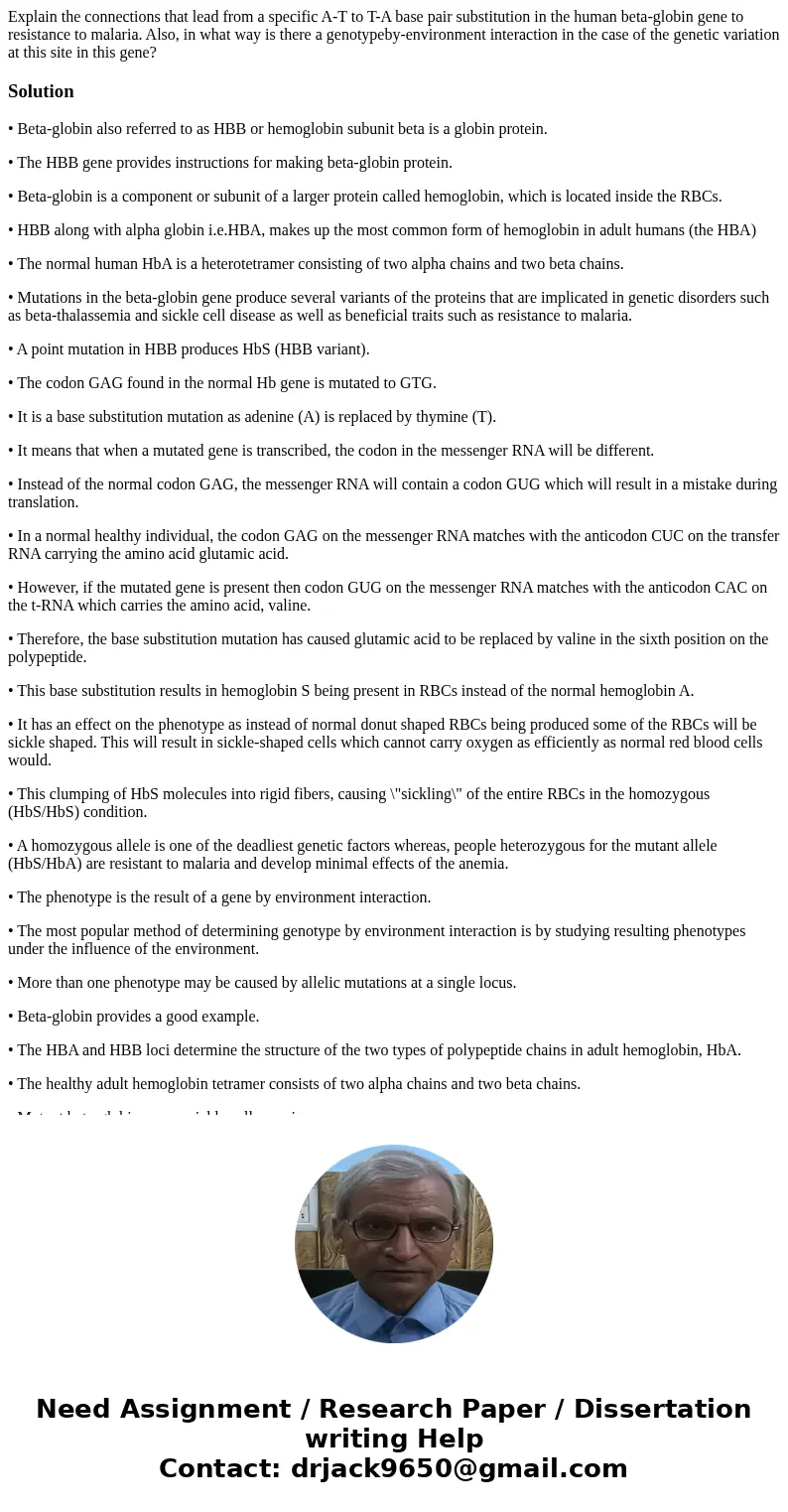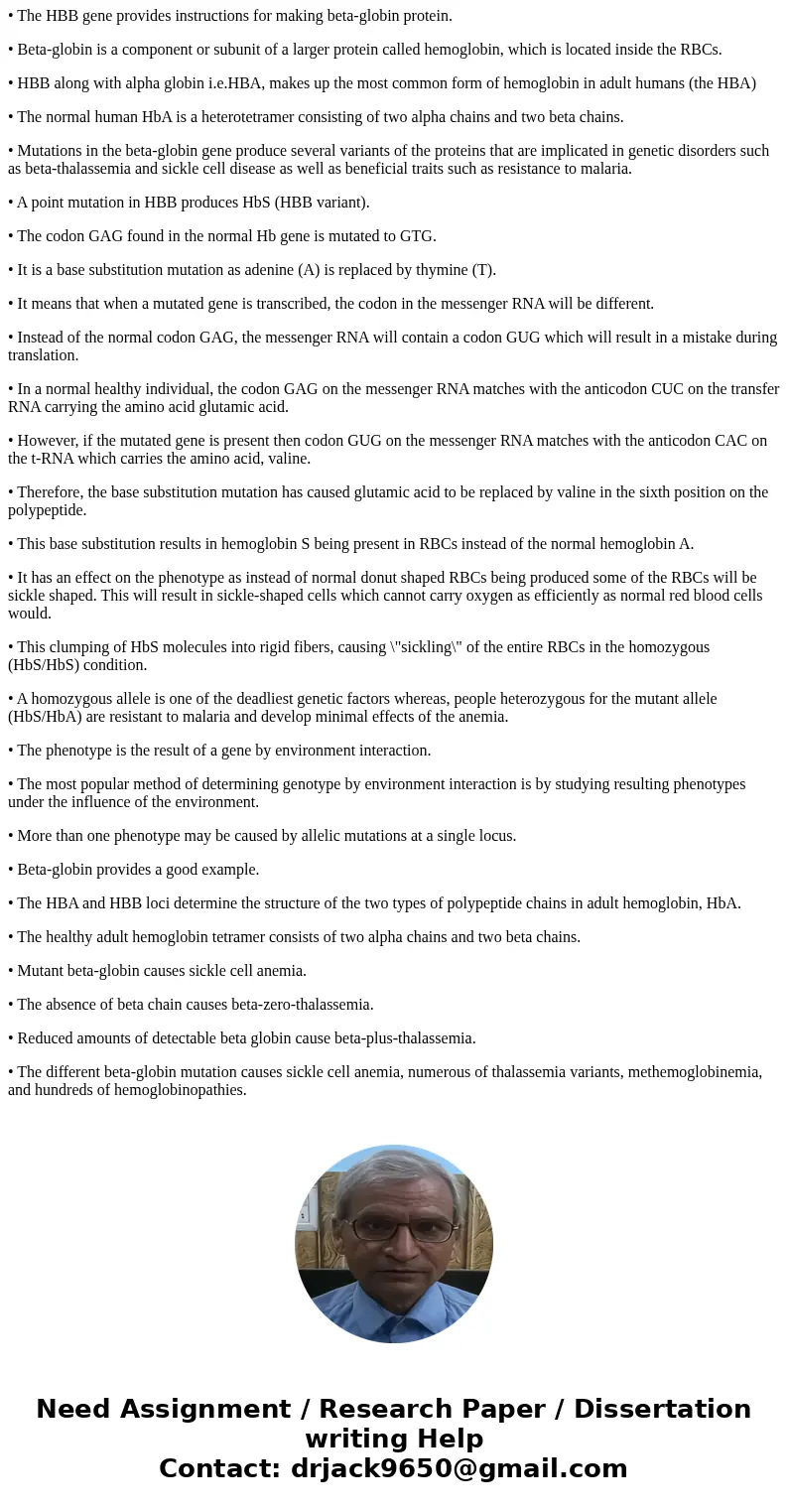Explain the connections that lead from a specific AT to TA b
Explain the connections that lead from a specific A-T to T-A base pair substitution in the human beta-globin gene to resistance to malaria. Also, in what way is there a genotypeby-environment interaction in the case of the genetic variation at this site in this gene?
Solution
• Beta-globin also referred to as HBB or hemoglobin subunit beta is a globin protein.
• The HBB gene provides instructions for making beta-globin protein.
• Beta-globin is a component or subunit of a larger protein called hemoglobin, which is located inside the RBCs.
• HBB along with alpha globin i.e.HBA, makes up the most common form of hemoglobin in adult humans (the HBA)
• The normal human HbA is a heterotetramer consisting of two alpha chains and two beta chains.
• Mutations in the beta-globin gene produce several variants of the proteins that are implicated in genetic disorders such as beta-thalassemia and sickle cell disease as well as beneficial traits such as resistance to malaria.
• A point mutation in HBB produces HbS (HBB variant).
• The codon GAG found in the normal Hb gene is mutated to GTG.
• It is a base substitution mutation as adenine (A) is replaced by thymine (T).
• It means that when a mutated gene is transcribed, the codon in the messenger RNA will be different.
• Instead of the normal codon GAG, the messenger RNA will contain a codon GUG which will result in a mistake during translation.
• In a normal healthy individual, the codon GAG on the messenger RNA matches with the anticodon CUC on the transfer RNA carrying the amino acid glutamic acid.
• However, if the mutated gene is present then codon GUG on the messenger RNA matches with the anticodon CAC on the t-RNA which carries the amino acid, valine.
• Therefore, the base substitution mutation has caused glutamic acid to be replaced by valine in the sixth position on the polypeptide.
• This base substitution results in hemoglobin S being present in RBCs instead of the normal hemoglobin A.
• It has an effect on the phenotype as instead of normal donut shaped RBCs being produced some of the RBCs will be sickle shaped. This will result in sickle-shaped cells which cannot carry oxygen as efficiently as normal red blood cells would.
• This clumping of HbS molecules into rigid fibers, causing \"sickling\" of the entire RBCs in the homozygous (HbS/HbS) condition.
• A homozygous allele is one of the deadliest genetic factors whereas, people heterozygous for the mutant allele (HbS/HbA) are resistant to malaria and develop minimal effects of the anemia.
• The phenotype is the result of a gene by environment interaction.
• The most popular method of determining genotype by environment interaction is by studying resulting phenotypes under the influence of the environment.
• More than one phenotype may be caused by allelic mutations at a single locus.
• Beta-globin provides a good example.
• The HBA and HBB loci determine the structure of the two types of polypeptide chains in adult hemoglobin, HbA.
• The healthy adult hemoglobin tetramer consists of two alpha chains and two beta chains.
• Mutant beta-globin causes sickle cell anemia.
• The absence of beta chain causes beta-zero-thalassemia.
• Reduced amounts of detectable beta globin cause beta-plus-thalassemia.
• The different beta-globin mutation causes sickle cell anemia, numerous of thalassemia variants, methemoglobinemia, and hundreds of hemoglobinopathies.


 Homework Sourse
Homework Sourse